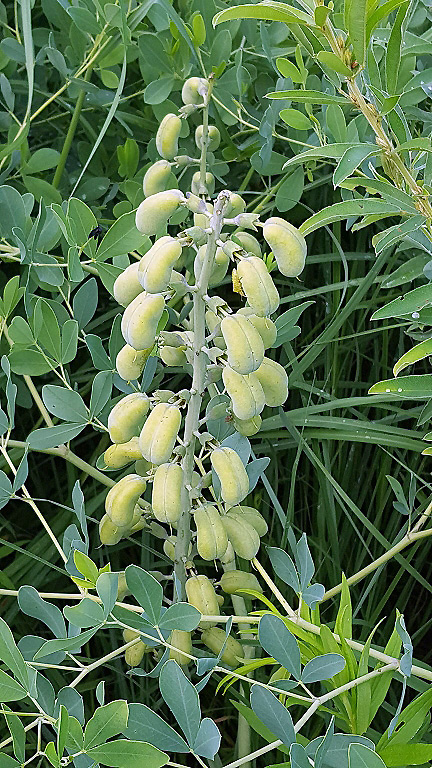This plant belongs to the Bean (Fabaceae) family. It is smooth, hairless, shrubby looking and can grow to 6 feet tall, often with a yellowish green cast and a thin, whitish coating on the stem and leaves. Leaves are alternate and divided into 3 leaflets which are broadest above the middle, and taper to wedge-shaped bases with rounded tips. Above the leafy portion of the plant are long, erect stems bearing scattered, individually stalked white flowers up to 1 inch long. Flowers have a 4-lobed calyx, an erect, fanlike upper petal, and 2 smaller side petals, flanking a keel-like lower lip. Fruits are fat, pointed, hairless, black seed pods less than 2 inches long.
White wild indigo blooms late spring to midsummer and is widely distributed in moist to dry prairies. This plant is deep-rooted and can persist long after other prairie plants have been destroyed by clearing or overgrazing. Although poisonous to livestock if consumed in quantitiy, Native Americans and European settlers used this plant medicinally.






